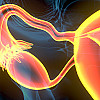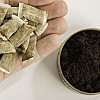Recent Blog Articles

Lead poisoning: What parents should know and do

How does waiting on prostate cancer treatment affect survival?

Does running cause arthritis?

Is alcohol and weight loss surgery a risky combination?

Preventing ovarian cancer: Should women consider removing fallopian tubes?

Healthier planet, healthier people

Is snuff really safer than smoking?

Will miscarriage care remain available?

Considering collagen drinks and supplements?

Does less TV time lower your risk for dementia?
Collarbone (Clavicle) Fracture
What Is It?
When a bone breaks or cracks, the injury is called a fracture. In the collarbone (clavicle), fractures can happen in three separate areas:
- The outer third of the collarbone is near the tip of the shoulder. Fractures here usually are caused by an accidental fall or some other type of direct impact (football tackle, hockey check, car collision) that transmits force to the side or top of the shoulder. Fractures in this area account for about 15% of all collarbone fractures.
- About 80% of all collarbone fractures occur in the middle third of the bone. A fracture here usually is related to a fall on an outstretched arm. This area also can be fractured by a direct impact to the middle of the collarbone, especially during stick sports, such as hockey or lacrosse.
- The third nearest the breastbone rarely fractures. Fractures in this part of the collarbone almost always are caused by a direct blow to the front of the chest, often from a steering wheel impact during a car crash.

The collarbone is one of the most common fractures. In most collarbone fractures, the ends of the fractured bone do not move apart widely, and the area of tissue damage involves only the collarbone. In rare cases, a sharp portion of the fractured bone either will pierce the surface skin (an open fracture), or cut into one of the large nerves or blood vessels that travel through the shoulder. In severe impact injuries, it is also possible for a portion of the fractured collarbone to penetrate the upper part the lung, causing serious breathing problems.
To continue reading this article, you must log in.
Subscribe to Harvard Health Online for immediate access to health news and information from Harvard Medical School.
- Research health conditions
- Check your symptoms
- Prepare for a doctor's visit or test
- Find the best treatments and procedures for you
- Explore options for better nutrition and exercise
I'd like to receive access to Harvard Health Online for only $4.99 a month.
Sign Me UpAlready a member? Login ».
Disclaimer:
As a service to our readers, Harvard Health Publishing provides access to our library of archived content. Please note the date of last review or update on all articles.
No content on this site, regardless of date, should ever be used as a substitute for direct medical advice from your doctor or other qualified clinician.
Free Healthbeat Signup
Get the latest in health news delivered to your inbox!
